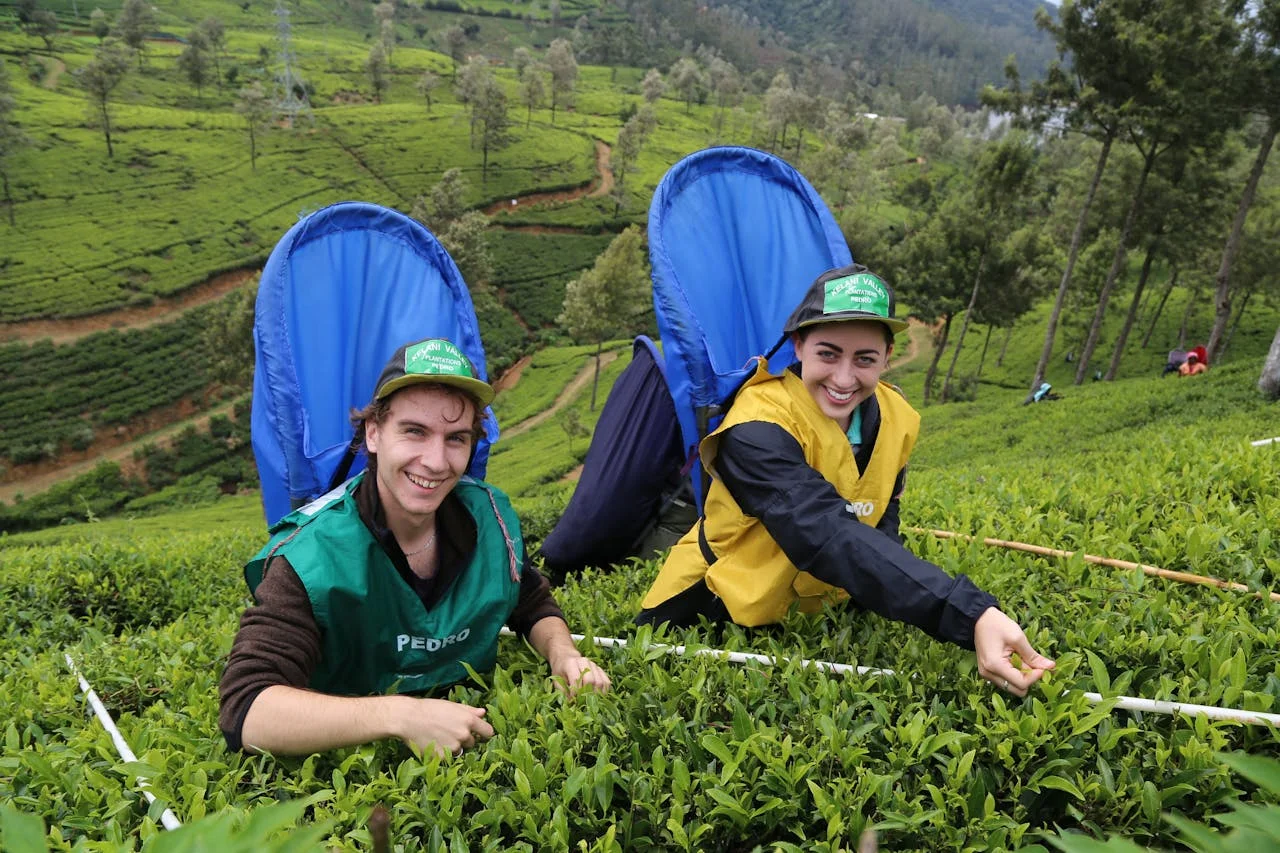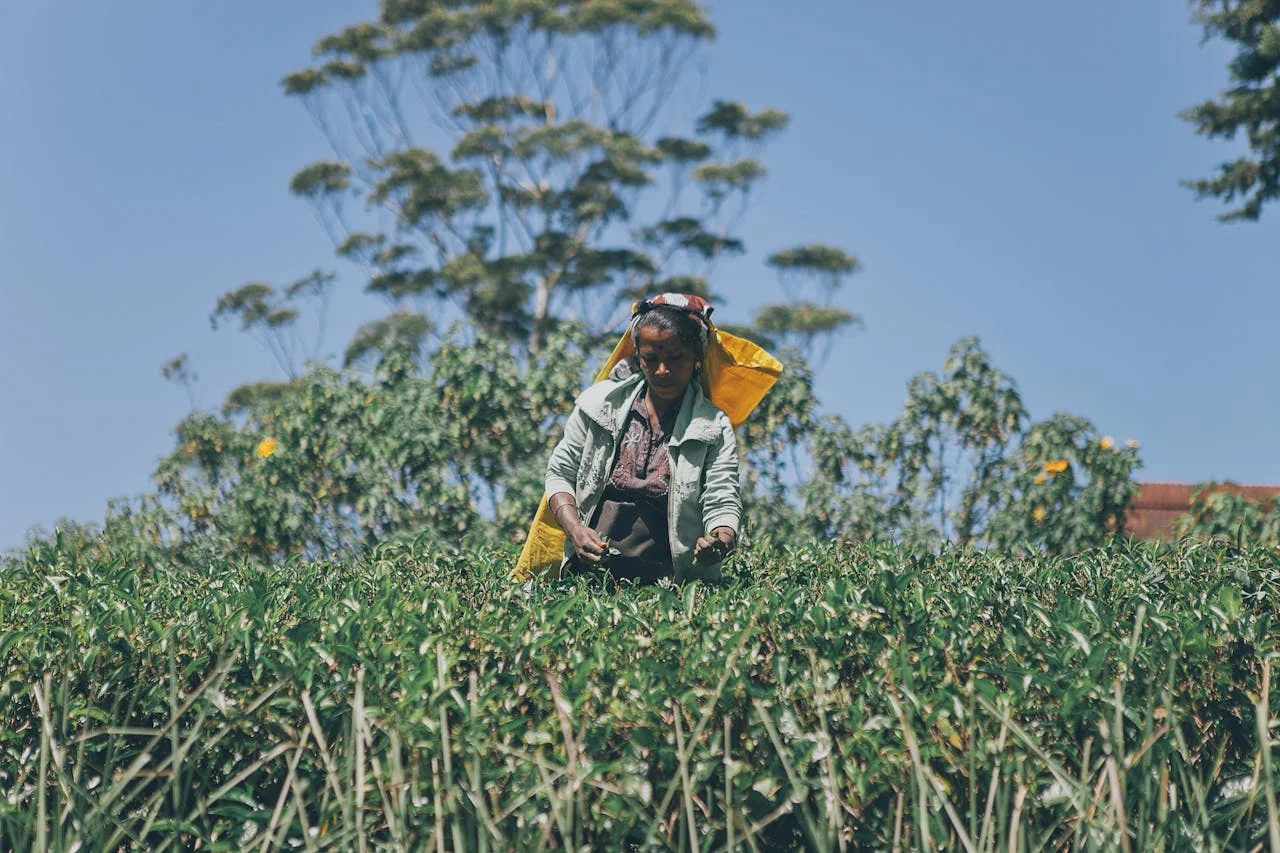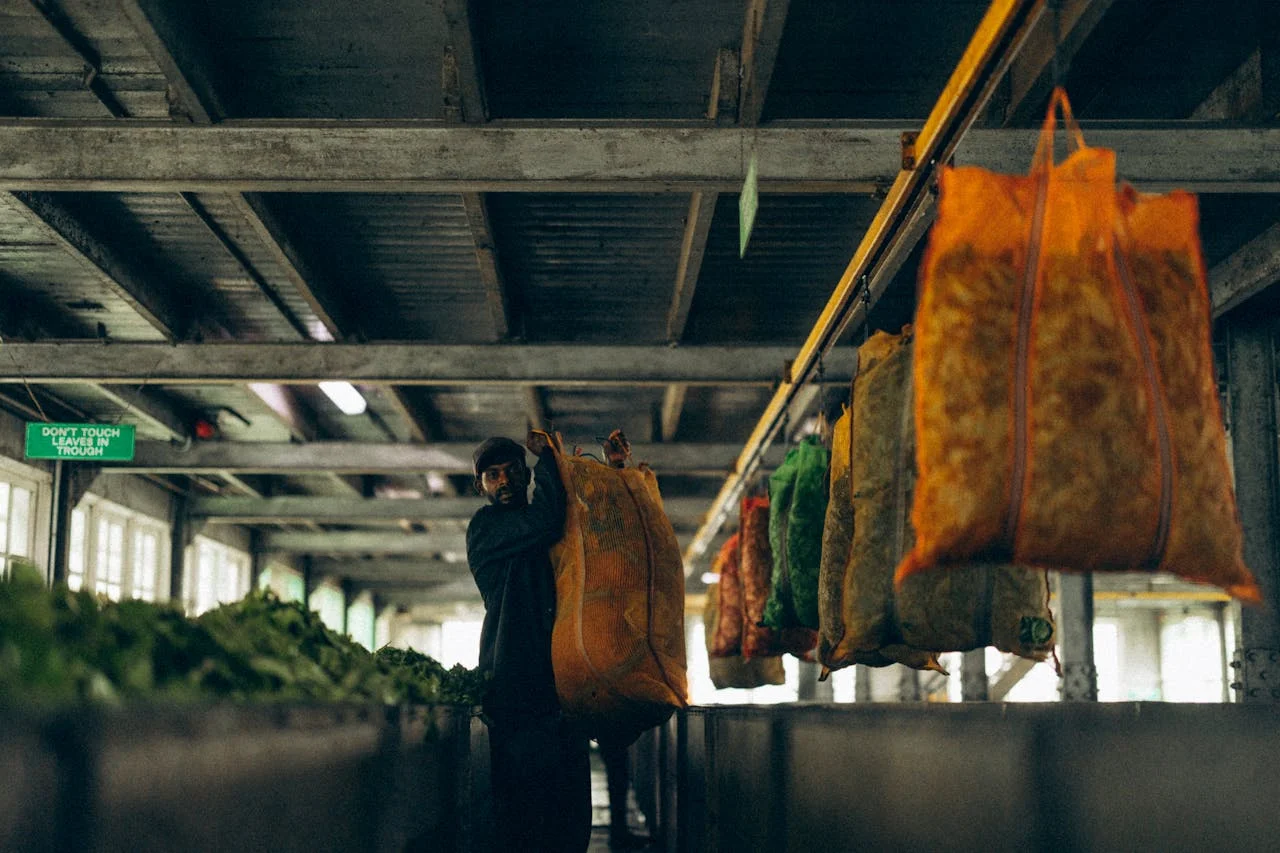
inga_escapes
August 8, 2024

Step off the train at Nanu Oya station, and the first thing that hits you isn’t the cool mountain air or stunning vistas – it’s the aroma. The entire hill country smells of tea: green, fresh, alive with possibility. This isn’t the stale dustiness of tea bags; this is tea in its wild state, growing on hillsides that seem to touch the clouds.
At 1,800 meters above sea level, cool nights and warm days create the perfect microclimate for tea cultivation. Frequent mists roll through valleys like nature’s irrigation system, while mineral-rich soil from centuries of monsoon rains creates flavor profiles impossible to replicate anywhere else.
The real magic happens in early morning hours when tea pluckers emerge from estate quarters, ready for another day of artistry that’s remained virtually unchanged for 150 years. Watching them work is like witnessing meditation in motion – precise, graceful, connected to generational rhythms.
Meet Kamala, a tea plucker who’s worked the Nuwara Eliya estates for thirty years. Her hands move through bushes with pianist-like confidence – two leaves and a bud, two leaves and a bud, each selection made in milliseconds based on decades of experience.
“The bush tells you what it’s ready to give,” she explains, her Tamil-accented English musical against rustling leaves. “Young pickers think it’s about speed, but really it’s about listening. The plant knows when it’s ready.”
Skilled pluckers harvest 15-20 kilograms daily while maintaining consistent quality. Every leaf meets the same standard: tender, fresh, containing the perfect balance of oils and tannins that transform into complex flavors tea lovers treasure. Many pluckers come from families who’ve worked tea for generations, carrying knowledge passed down through mothers and grandmothers.
Fresh leaves race against time to reach the factory within hours of plucking. The withering process removes just enough moisture to make leaves pliable without damaging cellular structure. Master tea makers evaluate leaves by rolling samples between palms, checking color and texture with expertise that can’t be taught from books.
Traditional rolling machines, some dating to British colonial times, break down cell walls and release enzymes that trigger oxidation – the chemical reaction transforming green leaves into black tea. The sound is hypnotic: gentle rumbling that becomes the factory’s heartbeat.
Oxidation requires precise timing. Tea leaves spread on tables in climate-controlled rooms while masters test samples every few minutes, seeking that perfect moment when full flavor develops without bitterness. The final firing halts oxidation at exactly the right moment, locking in unique flavor compounds.
Sri Lankan tea regions function like wine appellations, each producing distinctive characteristics based on altitude, rainfall, and climate:
Nuwara Eliya teas grow at highest elevations where cool temperatures create exceptional delicacy. They brew bright golden with citrusy notes – clean, refreshing, perfect for afternoon enjoyment.
Dimbula region teas benefit from unique wind patterns during monsoons. Full-bodied with distinctive brightness, they cut through milk and sugar beautifully, ideal for traditional Sri Lankan preparation.
Uva teas are the most distinctive Ceylon varieties. Seasonal winds create stress conditions producing intense, almost spicy flavor profiles that master blenders prize for complex blends.
Kandy district teas represent Ceylon’s diplomatic face – smooth, versatile, equally suited for breakfast blends or afternoon service while maintaining Sri Lankan complexity.
Tea culture extends far beyond plantations into daily family rhythms and social interaction. Traditional households begin and end days with tea prepared according to practices blending indigenous customs with colonial influences.
Morning tea provides caffeinated fuel for the day – strong, sweet, robust preparation designed for energy rather than subtlety. Mid-morning tea accompanies breakfast with traditional foods like string hoppers or coconut roti. Afternoon tea becomes social institution, extending for hours as neighbors gather for conversation and community bonding.
The preparation method – boiling rather than steeping – creates robust brews maintaining flavor even when iced, a practical tropical adaptation. Strong black tea with milk and sugar provides nutrition while tannins aid digestion.
Progressive estates recognize environmental sustainability as business necessity. Climate change threatens traditional growing regions with altered rainfall and temperatures, forcing adaptation through drought-resistant cultivars and improved water management.
Leading estates implement organic farming, turning factory waste into soil amendments while reducing chemical dependence. Worker welfare programs exceed legal requirements with modern housing, healthcare, and educational opportunities that retain skilled labor and ensure quality consistency.
Water management innovations protect ecosystems while ensuring irrigation. Solar installations reduce grid dependence while some estates generate surplus power for local communities. These initiatives respond to conscious consumers who understand exceptional tea requires healthy ecosystems and thriving communities.
Hill country visits reveal the entire tea process – from morning plucking sessions to factory tours during peak processing. The cool climate and stunning scenery make estate visits among Sri Lanka’s most rewarding cultural experiences.
Optimal timing combines morning plucking activities, midday factory tours during processing periods, and relaxed afternoon tastings. Some estates offer accommodation in colonial bungalows where managers once lived, providing multi-day immersion in tea country life.
Our hill country itineraries include working estate visits where guests participate in plucking, observe processing, and enjoy expert-guided tastings. These experiences provide context transforming future tea drinking from simple consumption into appreciation for centuries of accumulated knowledge and skill.

You must be logged in to post a comment.
Hi, this is a comment.
To get started with moderating, editing, and deleting comments, please visit the Comments screen in the dashboard.
Commenter avatars come from Gravatar.